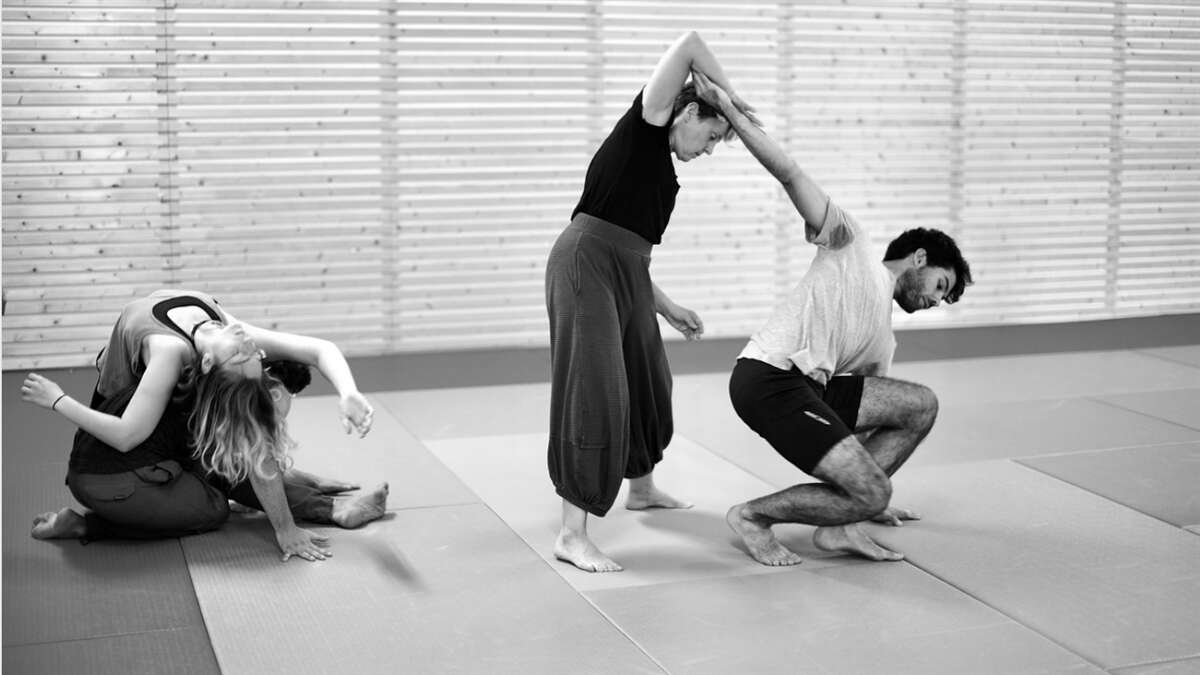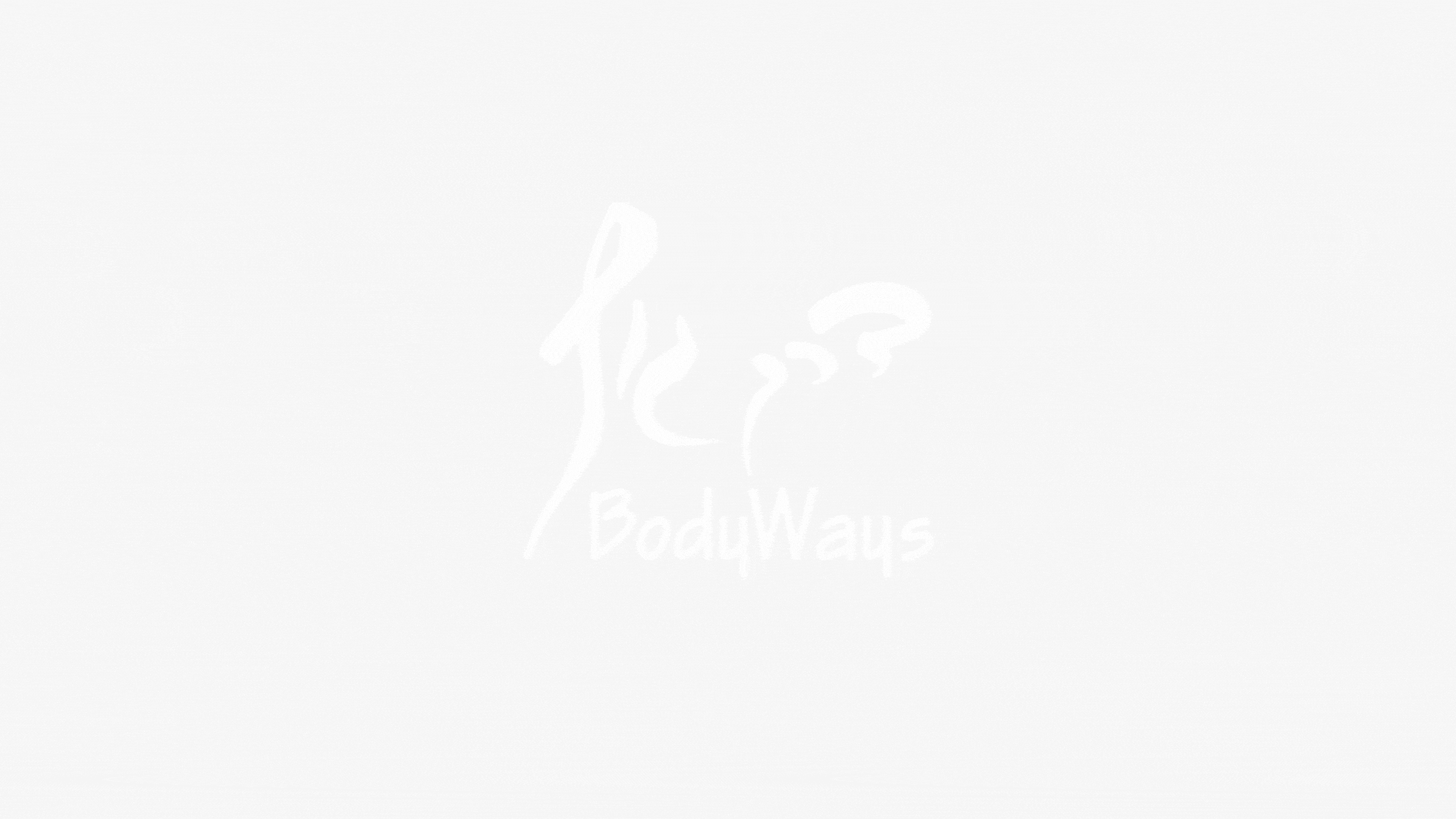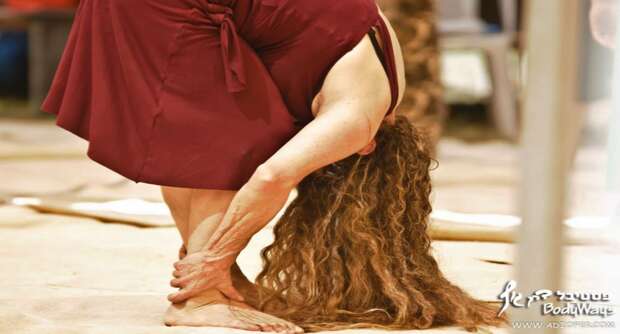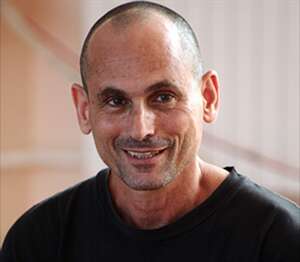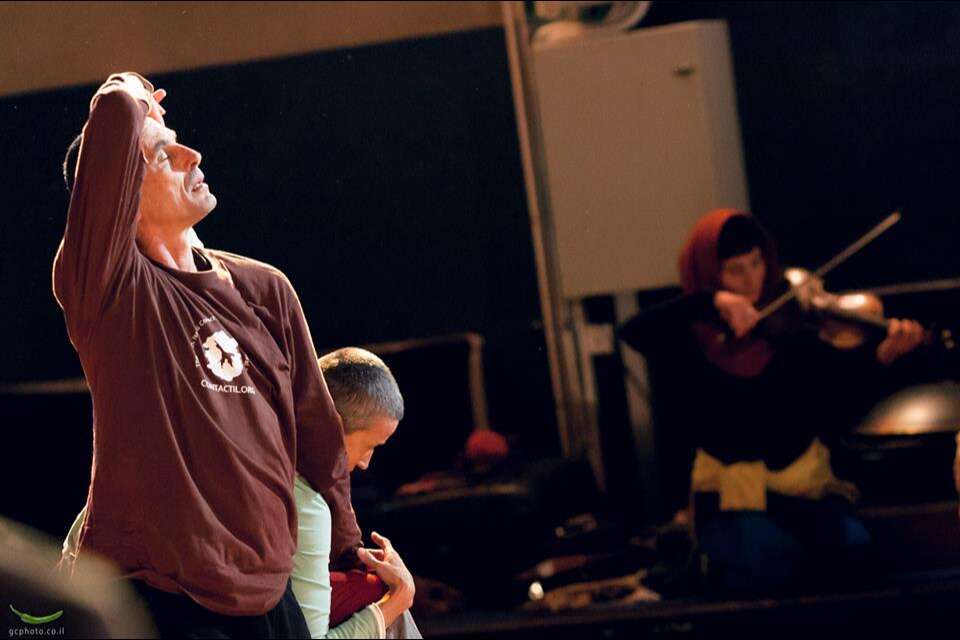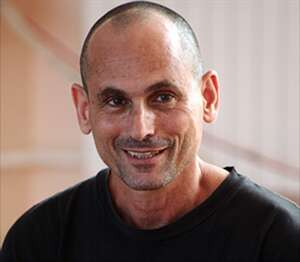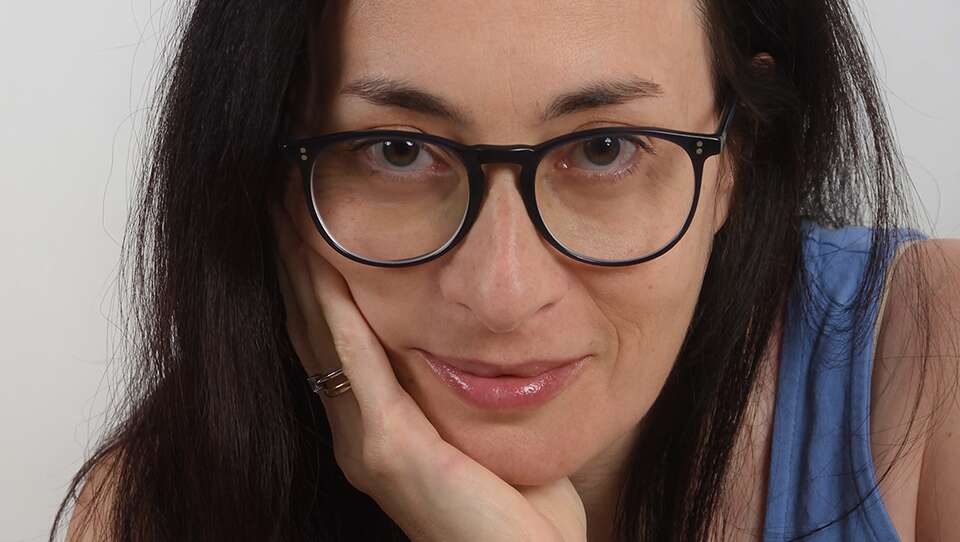Butoh, Contact-Improvisation and what`s in-between
From: "What is Butoh ? The Sick Prima-Donna"
by Fumiaki Nakamura
Hijikata told me / the story of the sick woman.
He said:
"Look at the sick woman / who lay in bed for
many years. / And before she dies, / she really wants
to stand up on her feet, / and tries with all her strength / to get up
from her bed. / Look at her! / She is not a dancer. /
But the sick woman / who tries to get up / senses fully / the force /
and the pull of the earth`s / gravity.
I think / she is the most beautiful dancer, / better than
the prima-donna of the Ballet / who stands
perfectly / on the tips of her toes".
And Hijikata added:
"Really, I would like to call / that sick woman /
`Yamaru Maihima`; / `The Sick Prima-Donna`.
The poet Fumiaki Nakamura is the most outstanding of the contemporary "Butoh thinkers". He accompanied the work of the founders of this dance form, Tatsumi Hijikata and Kazuo Ohno from its beginning, as a critic and as a collaborator.
(Freely translated from Hebrew. Hebrew translation from Japanese by Akiko Takahashi and Amir Or, 1997)
Hijikata, the founder of the avant-garde dance form called "Butoh", workd on the background of destruction of Japan at the end of World-War II, and the attempts of Japanese artists to re-define their culture, negating and defying its conventions, rigidity and hypocrisy. The dance-form he birthed was originally called "Ankoku Butoh", meaning "Dark Step" or "Dark Dance". This dance form demanded a very personal and very private investigation of consciousness and of the movement that emerges from the dancer`s body. He defies the "heroism" of the virtuoso dancer who overcomes nature and performs super-human feats, and invites the dancer to merge into nature, to authentically and hopelessly struggle with the forces of nature and consciousness.
This attitude towards dance focuses on the dancer as researcher, on his devotion and humbleness in front of nature, including human-nature. This attitude makes a possible integration of Butoh Dance, the wide spectrum of Dance-Improvisation, and the specific angle within it of Contact-Improvisation.
A line of people stands at the edge of the studio. Their standing is relaxed, on the edge of collapsing. An imaginary string hangs each one of them from above, preventing them from a final collapse. Their eyes are half closed. They sense each other, rather than see. An invisible web flows through them, attaches them. They start walking together. Their step is small, very slow and hesitant, as if they don`t really want to move ahead. Something, or someone, moves them. The slow pace of the walk, with half-closed eyes, challenges their balance. To stay in line requires listening and coordinating. They almost stumble, they tremble. Balancing reflexes develop into a range of a-symmetric body postures. Every step is a challenge. The space between the people is filled with slow, strange movement, as if they are on the edge of an abyss. A gentle, incidental touch occurs between them once in a while. Even without touching they seem somehow connected in spite of their differences. Their advancing is hypnotizing. Each of them is deep into his/her own unique movement-world. They advance together, like a very slow wave advancing towards the shore. They stop, together, a few meters from us, the spectators. I remember to breath.
Dance as research. Dance as experience. This dance is centered on the living, pulsating body and peels off familiar body patterns and forms of time and space and conventional aesthetics. It dissolves into an acutely subjective experience, in which the question "how does it look?" almost becomes meaningless, while observing "how is it experienced?" becomes essential. Butoh, or Contact-Improvisation can feel at home in this kind of dance. Obviously it is a very contemporary dance, highly individualistic but far from being egotistical. It requires a deep listening to self as well as to the other, stretching and dissolving rigid personal boundaries, requiring
curiosity and imagination and poetical sensitivity, as well as collaboration and responsibility.
The founders of the dance-form known as Contact-Improvisation researched during the 70`s aspects of the naturally moving body, its survival reflexes, its yielding to the forces of nature and Newton`s laws, of challenging the dancer`s consciousness in extra-ordinary states, especially in high speeds, wild circular momentum, collisions and crashes (check-out "Fall After Newton" on YouTube, that accounts for the first formative years). The evolution of CI in the last forty years added dimensions of calculated carefulness to prevent injury; the detailed anatomical- physiological study of movement, and the kinesiology of the moving body-structure; and the community aspect, that made this dance form accessible to populations that are not professional dancers, not only dancing "super-heroes".
The Japanese Butoh dance was also made accessible to wider populations, even though it still demands a measure of devotion and willingness to go deep (check-out the beautiful German movie "Cherry Blossoms"). It is associated with an extremely slow movement, highlighting the microscopic details of movement, intentionality and consciousness. It is associated with strong images, sometimes animalistic, primordial and wild, of birth and death, of growth and withering, of vast spaces and of limitations and poverty.
The meeting of Butoh with CI brings into the Contact dance the extreme slowing down that feeds meaning and richness into every bit of movement; the precision of touch, intention, awareness; the poetry of sharp images bubbling throughout the body; the emphasis on the flowing, ever-changing watery quality of the body. The meeting brings into Butoh the dialogical quality of the dance: an attitude that is curious, accepting and agreeing, non-judgmental and not achievement-oriented. It brings the dialogue through touch, elaborating on the subtlety of sensing touch with additional high-resolution levels that sometimes are overlooked in the flow of regular CI adventurous dancing. This meeting highlights the meditative quality of dancing much more that the tendency for acrobatic and "heroic" dancing.
המאמר פורסם גם כאן »
 מועדפיםלשמור פעילויות לאיזור אישי, להצטרף כשהזמן מתאים, וע"י כך גם לקדם אותן בתוצאות החיפוש
מועדפיםלשמור פעילויות לאיזור אישי, להצטרף כשהזמן מתאים, וע"י כך גם לקדם אותן בתוצאות החיפוש 




